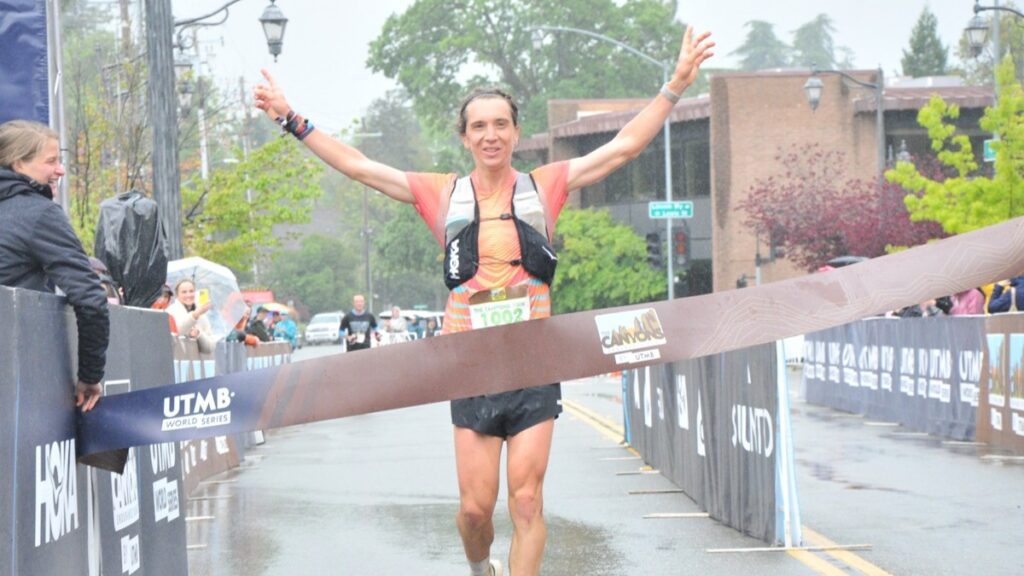The past weekend marked a significant event in the trail and ultra running calendar, showcasing high-stakes competition and noteworthy performances across various distances and terrains. Notably, several races served as qualifiers for prestigious events such as the Western States 100, underscoring the importance of these competitions for athletes gearing up for the season’s main races.
In Auburn, California, the Canyons Endurance Runs by UTMB offered a 100-mile and a 100-kilometer race under challenging weather conditions that included a blend of rain and snow. The women’s 100-mile race was won by Lin Chen from China, who narrowly edged out Aroa Sío of Spain. Chen’s finishing time of 18:33 is not just indicative of her competitive nature but also reflects tactical pacing and an ability to adapt under shifting environmental conditions, which is critical for athletes seeking to conquer long distances in unpredictable weather. These infrastructure aspects also play a role in preparation strategies for upcoming races, as trail conditions can drastically alter pacing plans. For the men, Ferdinand Airault from France demonstrated an impressive closing speed, catching longtime leader Tommy Sullivan in the final stretch to finish in 16:18. This reflects a tactical decision to conserve energy in the earlier portions of the race, suggesting that maintaining a flexible race strategy can yield dividends as fatigue sets in.
The 100k race served as a premier qualifier, allowing athletes to secure Golden Tickets for the Western States 100, an accolade highly sought after in the ultra running community. This race was characterized by a competitive women’s field, where Emily Hawgood of Zimbabwe proved her mettle, executing a race plan that involved leading early and maintaining an aggressive pace to secure victory in 9:46, just edging out Marianne Hogan. With the top five women finishing within 20 minutes of each other, this close competition speaks to the necessity of not only physical endurance but also precise pacing and mental resilience throughout the race.
Meanwhile, in Madeira, the altered courses of the Madeira Island Ultra-Trail due to previous wildfires offered a 115-kilometer race that tested competitors under similarly adverse weather. Katie Schide from the U.S. dominated the women’s event, finishing in a standout 14:20, illustrating a significant gap between her and the second-place finisher. Course alterations further highlight the need for adaptive strategies in training and race day decision-making, as athletes must be prepared for unexpected changes that may affect their pacing and nutrition plans.
In contrasting terrain and conditions, the Jinshanling Great Wall Trail Race in China offered a unique format, incorporating sections on the Great Wall itself. Caroline Kimutai of Kenya secured the women’s win with a pace that allowed her to climb to the front midway through the race. Athletes should take note of how racing on varied terrain, specifically technical downhill sections, necessitates strength training and agility work in their training plans, skill areas that can dramatically affect performance when pushing hard in mountainous races.
The Grand Raid Ventoux in France, offering distances of 100 miles, 100 kilometers, and 50 kilometers, had French runners dominate the men’s standings, with Matthieu Simon taking the win in 12:33 for the 100-mile distance, showcasing how competitive domestic fields can provide valuable insights into racing tactics such as pacing, gear choices, and nutrition strategies. On the women’s side, Ida-Sophie Hegemann led the 100-mile race with a time of 15:57, which hints at effective race preparation that leverages consistent training and acclimatization to the events’ specific demands, teaching lessons in endurance management.
Similarly, the Mt. Fuji 100 Mile in Japan drew significant international competition, substantiating the event’s status on the trail running circuit and giving athletes a platform to refine their pacing and climbing strategies in a high-demand climate. Here, Joaquín López made a notable mark with a course record time of 17:48, indicating the importance of course familiarity and strategic implementation of energy management over the race’s duration. In any competitive ultra, understanding the nuances of the course profile—its climbs, descents, and technical sections—can be vital for effective race strategy.
For runners pursuing qualification for major ultramarathons, these weekend performances underscore the necessity of thorough preparation and strategic racing plans tailored to both individual strengths and the unique characteristics of the course. Varying conditions across these races underscore the complexities of ultra running, where weather, terrain, and field competition can significantly impact performance.
The key takeaway from these events is the importance of developing a flexible racing strategy. Athletes should familiarize themselves with their race courses, practice nutrition plans, maintain physical conditioning that supports their tactics, and develop a keen awareness of pacing. Runners should keep in mind that adaptability, both in training and during races, can mean the difference between a personal best and a race day struggle.
